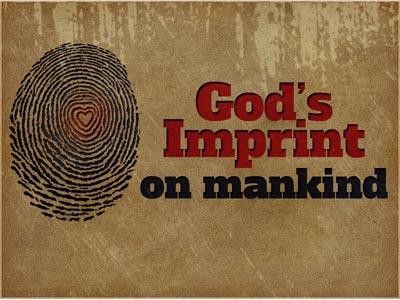-
Going Out And Coming Home Series
Contributed by W Pat Cunningham on Nov 28, 2017 (message contributor)
Summary: The Christian experience of Christ and of worship is an unique celebration of the going out of creation and the coming home of redemption.
Monday of 30th week in course
25 Oct 2010
The Spirit of the Liturgy
Today’s Gospel is ideal for reflection on true worship and the Jesus-centered vision of the Christian Sabbath. The God of the Sabbath, who became human, restored the meaning of the Sabbath as a day of liberation, a day of healing, a day of returning the human to the state God intended for us. The spirit of deformity is defeated and driven out, and the woman can stand up straight and give thanks to God for the first time in almost two decades. But the hypocrite leader of the congregation, who knows the letter but not the spirit of the Sabbath regulations, would help out his thirsty jackass but would prevent the woman’s healing. This is the constant temptation for religious leaders–to get comfortable with what they like, to work hard to get everything into what they consider orderly worship. When a prophet like Jesus comes along, instead of listening to the voice of God, they resist. In a parallel Gospel passage, the leaders get together and conspire to kill Jesus.
In every religion, the Holy Father tells us, there is an acknowledgment of a twin movement in human development and worship. There is a “going out” and a “coming home.” In Gnostic thought, which is always a temptation to Christians, the “going out” is a falling down. The primeval picture is in the Epic of Gilgamesh, which predates even the Old Testament. There, a cosmic battle results in the death of an evil god, and the material world is created from the body of that defeated god. To a Gnostic, whatever creation as we find it is, it is not good. To a Gnostic, all we can do for most people is cater to their basic instincts, because they cannot be redeemed. True redemption is found in a special gnosis or knowledge that is reserved for the elite few. So, in the modern incarnation of gnosis, “exercises for relaxing the body and emptying the mind are seen as the path to redemption. They aim at liberation from finitude, indeed they momentarily anticipate that liberation” and pretend to have salvific power.
The Christian view, the Christ-centered perspective, is that all such human efforts to redeem itself are doomed to fail. That is because the gnostic perspective is upside-down. The “going out” from the divine was not a fall, but a beginning. In the beginning, God made the heavens and the earth, and in every act, Genesis says, God gave a cosmic commentary. “He looked on it and saw that it was good.” When He created man and woman, he said that it was “very good.”
Evil entered the world because when God created humans in His image and likeness, He took the ultimate risk. He gave us intellect and free will. Only with intellect and will like His own could we be free to choose the good. The first humans, however, tempted by evil, chose the bad. They rebelled, and the whole world was corrupted by that revolution. “In Adam, all sinned,” says Paul. But that was not the end of the story. God’s plan took into consideration the freedom of humans to choose the bad. So God sent His beloved Son, out of the same love that made us, to become one of us, to deliver Himself into our hands and be tortured and murdered so that He might be raised up. And the risen Christ is all powerful. So powerful that His words can give water the power to erase sin and give new, supernatural life. So powerful that His words, spoken by the priest in persona Christi, can change the substance of Bread and Wine into Himself, Body, blood, soul and divinity.
This enables the Christian’s true “coming home.” We come, humbly acknowledging that our own sin has broken the divine intent, that we have, in little ways and large, been a “god of one’s own making.” “Worship now has a new aspect: the healing of wounded freedom, atonement, purification, deliverance from estrangement. The essence of worship. . .remains unchanged. But now it assumes the aspect of healing. . .Worship is directed to the Other in himself, to his all-sufficiency, but now it refers itself to the Other who alone can extricate me from the knot that I myself cannot untie–the redeemer.” The Fathers of the Church saw this in the parable of the Lost Sheep. “The sheep caught in the thorn bush and unable to find its way home is a metaphor for man. . .The shepherd who rescues him and takes him home is the Logos himself, the eternal Word. . .He it is who makes his way to us and takes the sheep onto his shoulders” by assuming human nature and taking human nature home to heaven. “Sacrifice takes the form of the cross of Christ, of the love that in dying makes a gift of itself.” It is not a destructive act but an act of new creation. . .All worship is now a participation in his “passing over” from divine to human and from death to life.

 Sermon Central
Sermon Central



